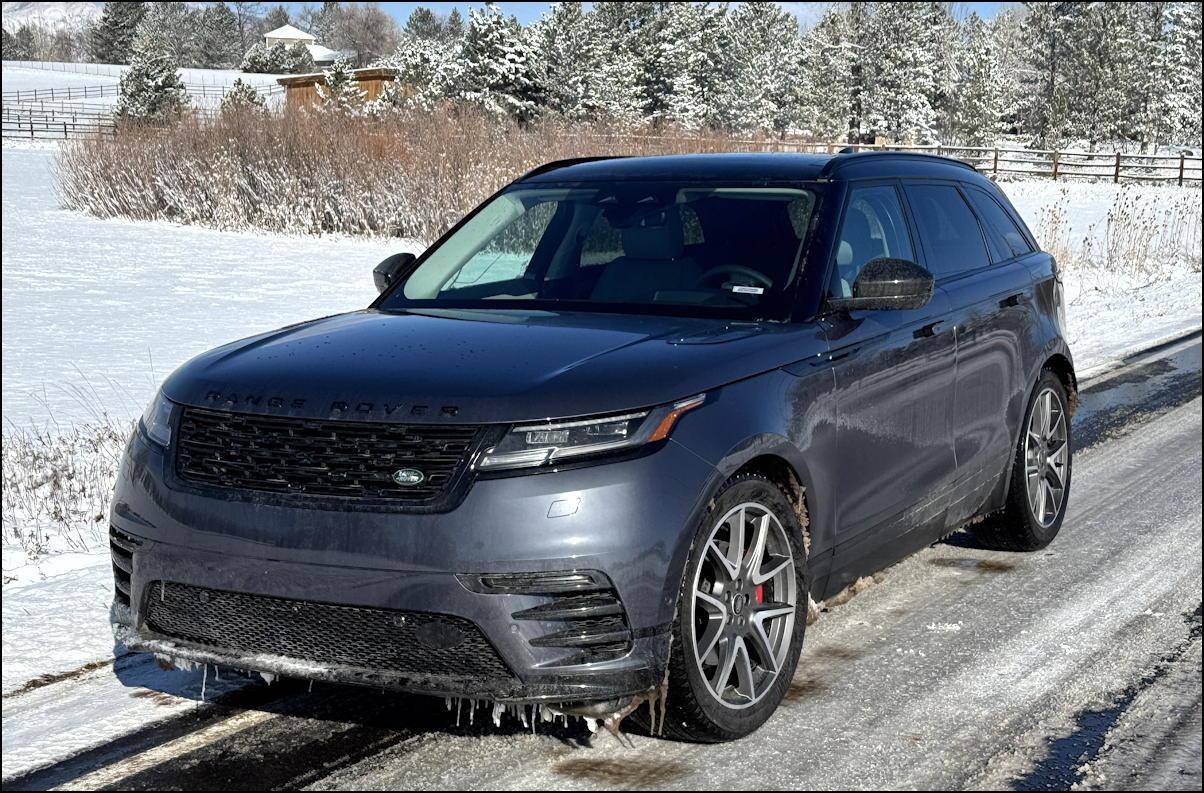Let's travel back in time to 1904 when a small English car company called Rover began producing luxury sedans. During the height of World War II Rover expanded into rugged off-road vehicles inspired by the Willys Jeep: Land Rover. More time passed and Rover was subsumed by Land Rover, a few mergers happened, and Range Rover was launched as a subbrand in 1978, focused on high-end luxury SUVs. Now both brands are part of Jaguar Land Rover, itself owned by Tata Motors, a massive auto conglomerate based in India.
That's a lot of history for a car brand spanning over 120 years and many nations. When I had the chance to drive the latest from Range Rover, I was naturally curious if it retained an identity as a luxury SUV or not. I climbed into the 2025 Range Rover Velar Dynamic SE, with the 2.0L turbocharged 4-cylinder engine, and was gratifyingly impressed. It's a sleek, elegant vehicle that has a lot of the rugged Range Rover features hidden for when you need them, coupled with a comfortable drive experience. The model they dropped off was Caresine Blue, with a Cloud Textile interior:
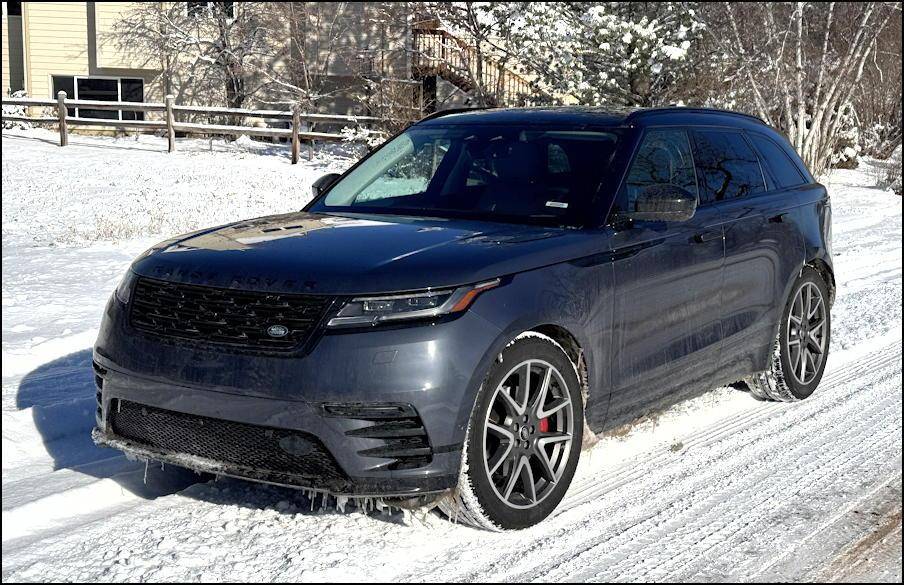
The timing was great because we've had a long slog of sub-freezing days and sporadic snowfall that's transmogrified into icy road surfaces. Not normally my favorite driving condition, but in a Range Rover, shouldn't I be able to laugh at inclement weather? It turns out that the grass/gravel/snow driving mode ensured the vehicle was sure-footed even on the worst sidestreets, and I never once felt like I had less than 100% control. All that coupled with an elegant exterior and interior makes the Velar a solid premium option.
One thing that many Tesla owners complained about upon first getting into their vehicles is that all the standard knobs and buttons were replaced with screens on the do-everything infotainment system. It appears that the Range Rover design team was inspired by this and the Velar has one of the most minimalist designs I've experienced:
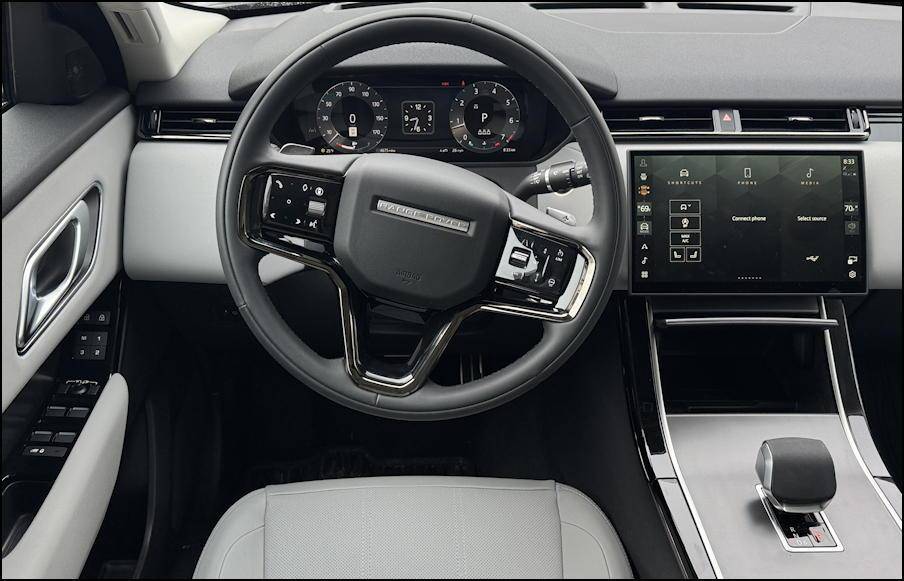
Once you have time to figure out what's where, it works perfectly well, though the smooth surface of the center console stymied my usual instinct to place my phone there when driving. In front is a shelf with wireless charging that's safer anyway, but as you can see, the usual climate control buttons and entertainment controls are all subsumed by the infotainment system running the "Pivi Pro" infotainment software. (only worth mentioning because the car comes up in Bluetooth as "Pivi" rather than "Range Rover" or "Velar", which is a bit disconcerting).
I suspect that testing revealed that too few buttons caused unhappiness with owners, so Range Rover's compromise was to overload the steering wheel control bar with inexplicable icons and tons of control options:
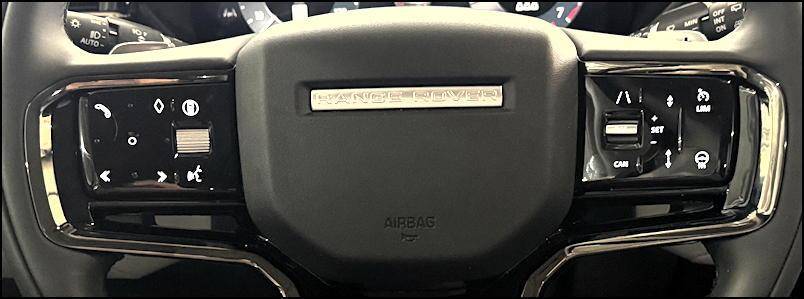
I never did figure out what the diamond button on the left side controlled, becoming a bit concerned that I'd change something or disable a safety feature I really wanted to keep enabled. There's probably a video online somewhere that explains each button and new owners may have a dealer walkthru to acquaint them with the myriad of steering wheel controls (and note the overloaded lights and wiper sticks just behind the wheel and paddle shifters).
None of this diminished my appreciation for the calm, peaceful sense of the Range Rover's interior, however, and if you think about your own driving, you likely only touch controls infrequently, other than cruise control, media, and possibly climate controls. Certainly, the modest 11.4" infotainment screen being more square than on most vehicles offered a lot of information:
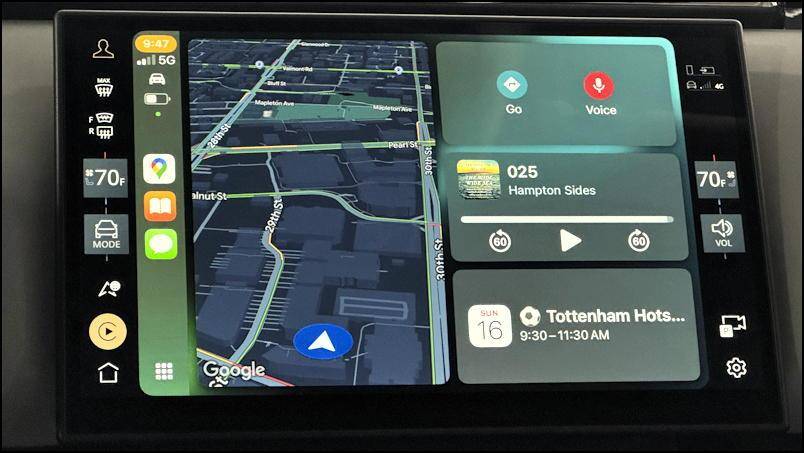
Again, how big a screen do you need when you're supposed to be keeping your eyes on the road? Notice in the above that Apple CarPlay has the central portion, but both left and right edges are part of Pivi Pro and offer a surprisingly wide range of options and easy access to climate and drive mode settings.
This screen made me wonder whether a square screen would work in a vehicle. I've seen this shape and both long and tall rectangles, but a square? Hmm...
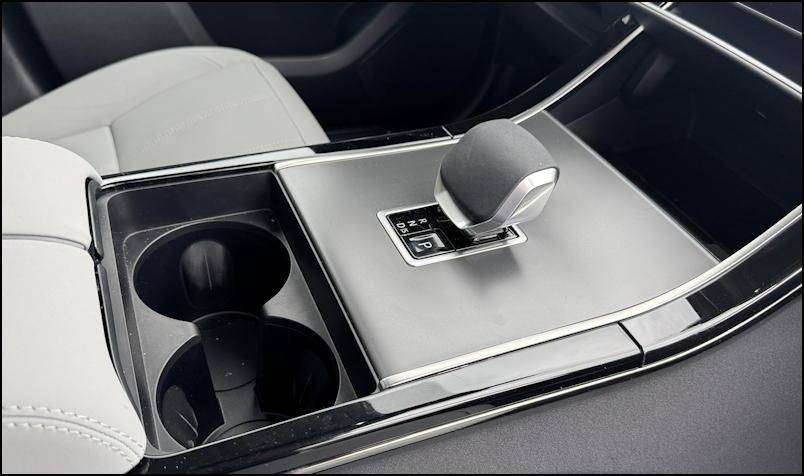
Let's go back to the center console design, because if you look at this and think "so elegant" you're going to love the Range Rover design. If you look at it and wonder where all the controls are, this might not be the vehicle for you.
Earlier I was talking about the chilly weather. How chilly? One morning I got into the Velar to find the rearview mirror in the darn vehicle was iced over:
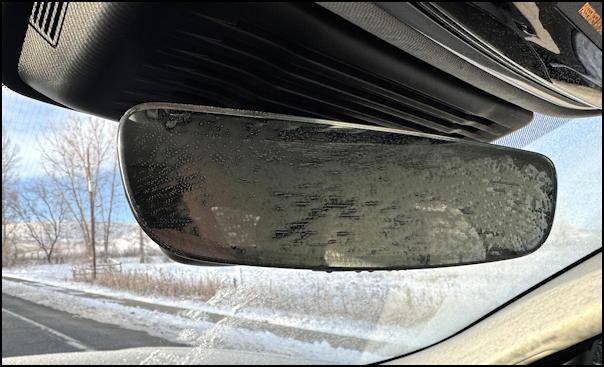
Even with that frigid temperature, it drove beautifully. In fact, some auto writers have complained that the 2.0L engine is "underpowered" but I found it was a peppy and lively drive experience, coupled with its 8-speed automatic transmission. Plenty of power to come right up to speed entering a highway or for the boost needed to pass someone on a winding road.
Fuel efficiency wasn't great, delivering a disappointing 21.1 mpg across my week, with EPA estimates of 22/26. Was it not tuned for our 5200-foot elevation, or perhaps did the extreme cold impact fuel efficiency? It's rare for me to drive a vehicle that doesn't at least meet its minimum "city" EPA estimates. Unfortunately, luxury vehicle buyers rarely seem to be concerned with maximizing fuel efficiency, so this might well be a dimension of the Range Rover Velar that isn't important to potential buyers, at least in the United States of America.
Back to the design, the main gauge display had some very austere options. I choose to have the traditional dual gauge speedometer and tachometer, coupled with an analog clock:
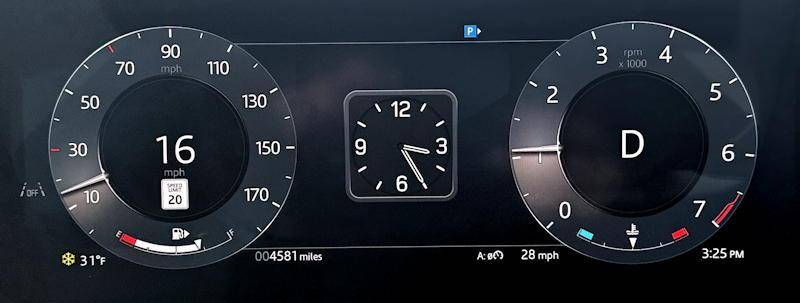
Very pleasant, right? Since it's an English car, we can perhaps conclude that English drivers prefer the gauges flipped; almost every other car I've driven has the tach on the left and the speedometer on the right. Curious, isn't it?
The rear cargo space was pleasantly roomy, and rather than the common 40/60 split seat, the Velar has a more functional tri-seat design, as you can see:
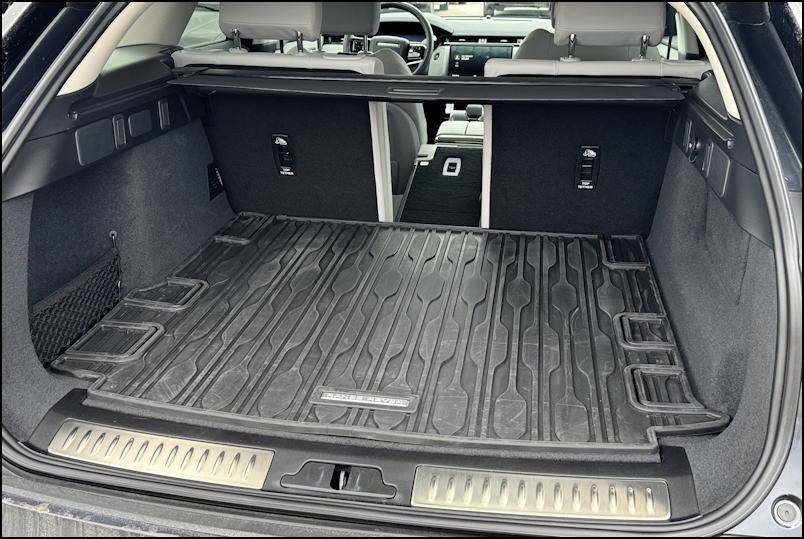
It's worth noting that I folded down the center portion of the back seat because the center headrest blocks much of the rearview mirror's view. In my car, I've popped off the center headrest (easily restored if we have sufficient passengers) but Range Rover didn't offer an obvious way to do that. This ends up a win:win, though; a functional armrest for back passengers and improved visibility for the driver.
The biggest complaint I had with the 2025 Range Rover Velar was with rear legroom, of which there was almost none:
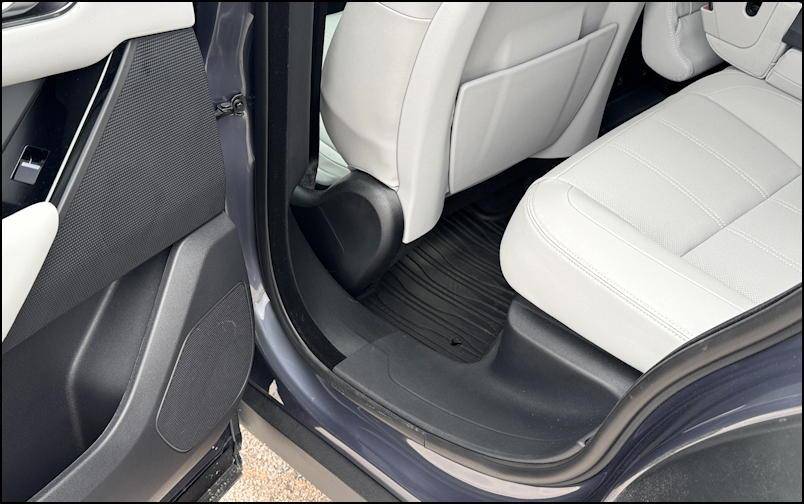
Even a child would complain about this lack of legroom, and it's certainly insufficient for an adult. Could I have moved the front seat forward to compensate? Yes, but then the driver (and potentially front passenger) are also uncomfortable. The vehicle really needs another 6-10 inches of length to remedy this problem, even if it adds other complications with design. Otherwise, it's hard to consider the Velar as a four or five adult vehicle, it's almost a two seater with "bonus seating" for insurance and categorization purposes (like so many sports cars).
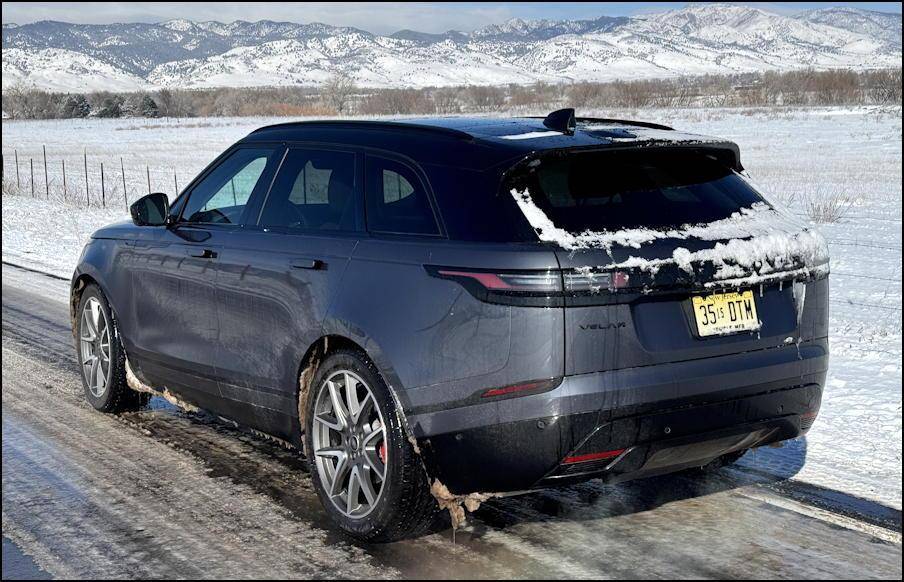
Rear legroom was my only complaint after driving this vehicle for a week through some gnarly weather conditions and road surfaces. It is otherwise a fun and engaging SUV with an elegant design and a reasonable price tag for a vehicle of its class and style. If you're in the market and don't need to worry about back-seat passenger space, this is an unusual vehicle that subtly states you don't think with the pack but can go your own way in life. Well done.
2025 Range Rover Velar Dynamic SE, powered by a 2.0L turbocharged 4-cylinder gas engine and 8-speed automatic transmission. BASE PRICE: $63,600.00. Options Included: Dynamic Handling Package, Cold Climate Package (thank goodness), 21" Dark Grey Wheels, Technology Package, Color, Contrast Roof, Exterior Pack, Interior Protection Pack, Roof Rails, Emergency Pack, Handover Pack. AS DRIVEN: $76,115.00.
Disclaimer: Range Rover loaned me the Velar for a week in return for this candid write-up. This article originally appeared on PlanetDave.com with the title Simple Elegance: The 2025 Range Rover Velar Dynamic SE and is republished with permission.
Hey Dave Taylor wants you to share this!
